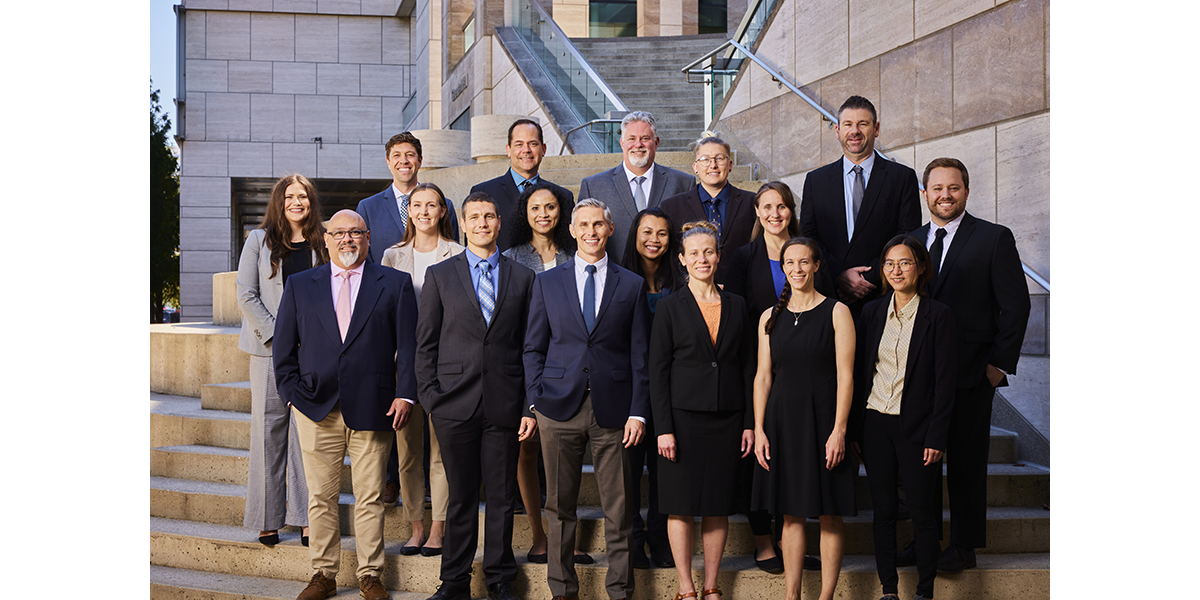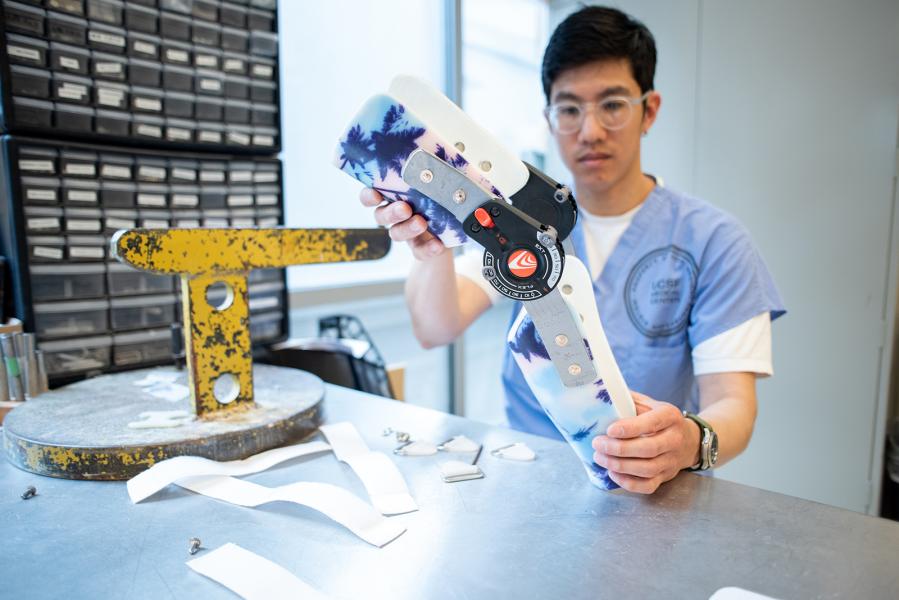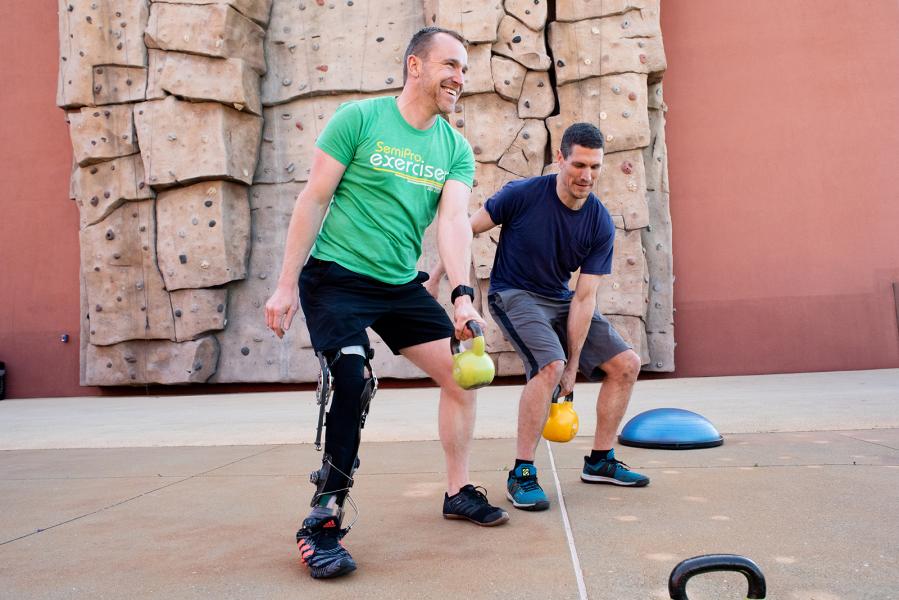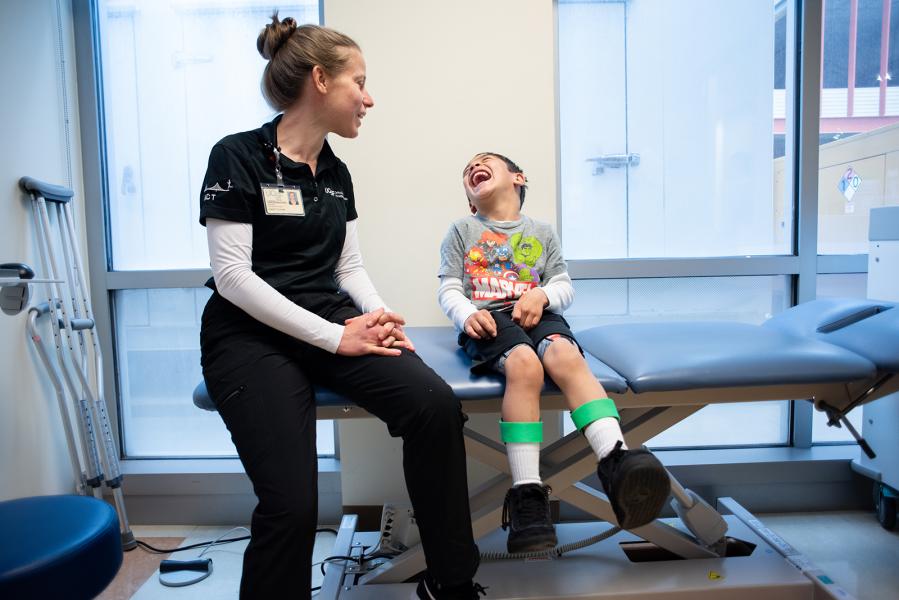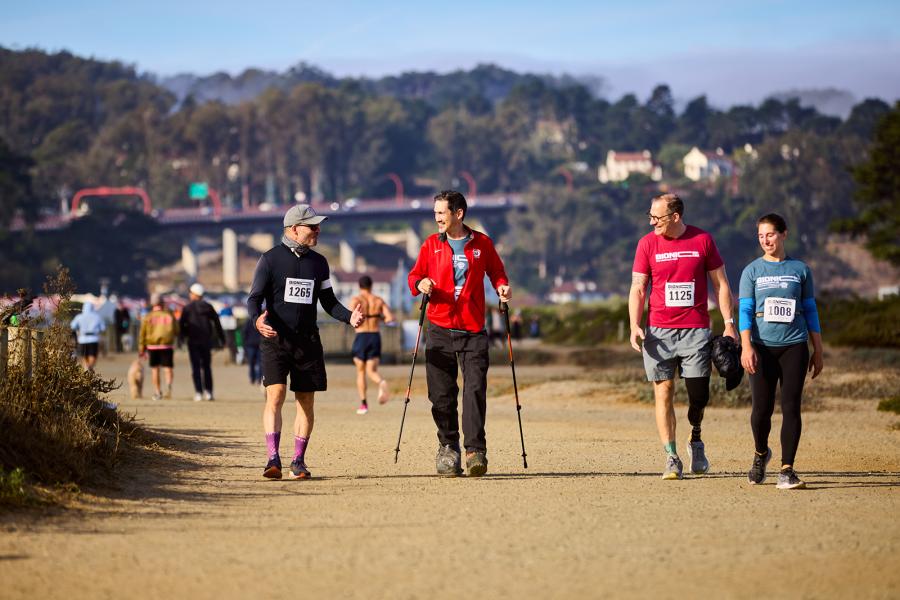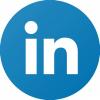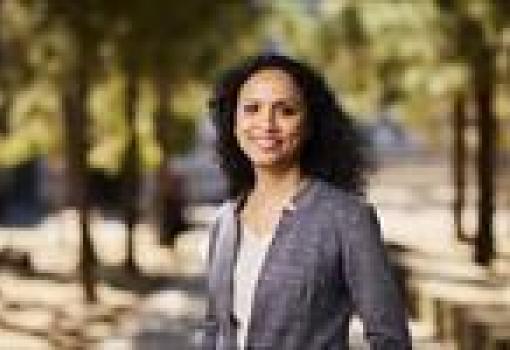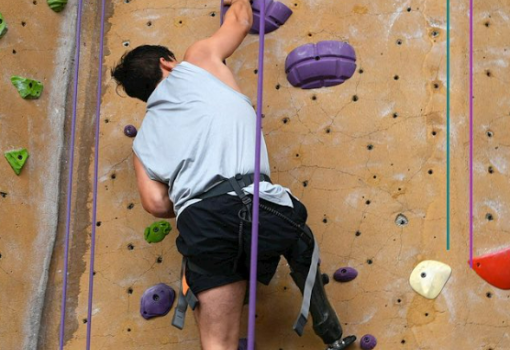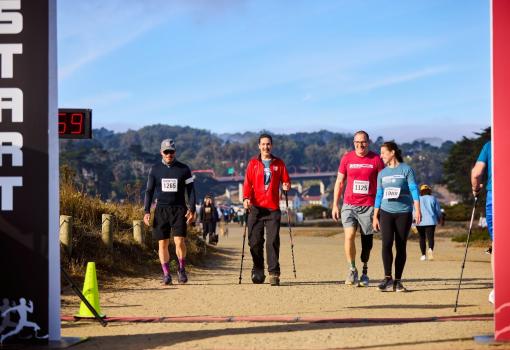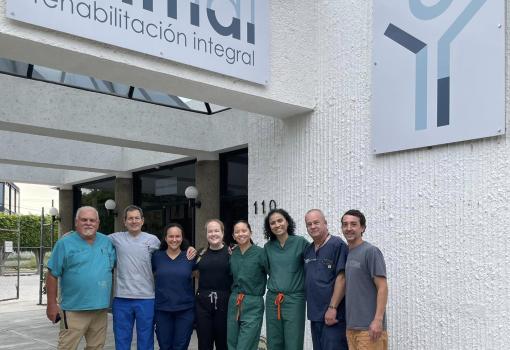Orthotics and Prosthetics
Our mission and vision
Mission: The mission of the Orthotic and Prosthetic Centers at UCSF is to provide the finest care, service, innovative design, and research in the field of orthotics and prosthetics, by uniting a team of expert professionals dedicated to improving the lives of patients worldwide. All members of the UCSF O&P team are leaders in their profession, and are devoted to helping patients rediscover independence and achieve their desired level of function. Unsurpassed professionalism, integrity, and clinical experience are the benchmarks of our practice. Vision: To be world leaders in patient experience, clinical outcomes, research and education.
Vision: To be world leaders in patient experience, clinical outcomes, research and education.
Our values
Compassion: Empathy for patients, their families and staff is ingrained in our history and inspires our future. We do more than treat pathologies; we practice patient-centered care as the cornerstone of compassion.
Excellence: Our promise to maximize the physical potential of our patients is an enormous responsibility. We follow the highest standards of quality and safety and expect accountability from each other.
Integrity: At all times, we approach our work with openness, transparency, decency and humility. It is our responsibility to use resources wisely to facilitate the sustainability of the Orthotic and Prosthetic Centers at UCSF for generations to come.
Collaboration: We work in partnership with patients, their families, staff, providers, volunteers and donors. This spirit of respectful cooperation extends beyond our walls to our vendors, colleagues, and the community.
Equity: We embrace and find strength in the diversity of our patients, their families, staff and community. We believe all patients deserve exceptional care, the best outcomes, respect and a safe environment.
Innovation: We aspire to be leaders in orthotic and prosthetic healthcare, research, and innovation. We continually seek new and better solutions. Because healthcare improvement springs from knowledge, we foster innovative curiosity and technological discovery.
Appointments & Locations
Appointments:
Orthopaedic Institute at Mission Bay: 415-476-1788
Parnassus Heights: 415-476-1788
Redwood Shores: 415-476-1788
Mission Bay Hospitals - Pediatric Services: 415-476-1788
Zuckerberg San Francisco General Hospital: 628-206-4387
- Education
- Patient Story
- Community Events
